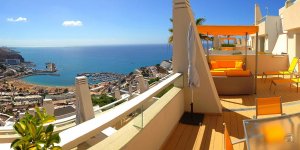| English Dictionary |
VOLCANO (volcanoes)
| Pronunciation (US): | (GB): |
| IPA (US): |
Dictionary entry overview: What does volcano mean?
• VOLCANO (noun)
The noun VOLCANO has 2 senses:
1. a fissure in the earth's crust (or in the surface of some other planet) through which molten lava and gases erupt![]()
2. a mountain formed by volcanic material![]()
Familiarity information: VOLCANO used as a noun is rare.
Dictionary entry details
Sense 1
Meaning:
A fissure in the earth's crust (or in the surface of some other planet) through which molten lava and gases erupt
Classified under:
Nouns denoting natural objects (not man-made)
Synonyms:
vent; volcano
Hypernyms ("volcano" is a kind of...):
cleft; crack; crevice; fissure; scissure (a long narrow opening)
Domain member category:
eructation; eruption; extravasation ((of volcanos) pouring out fumes or lava (or a deposit so formed))
active ((of e.g. volcanos) erupting or liable to erupt)
Sense 2
Meaning:
A mountain formed by volcanic material
Classified under:
Nouns denoting natural objects (not man-made)
Hypernyms ("volcano" is a kind of...):
mount; mountain (a land mass that projects well above its surroundings; higher than a hill)
Meronyms (parts of "volcano"):
crater; volcanic crater (a bowl-shaped geological formation at the top of a volcano)
Instance hyponyms:
Guallatiri (the world's highest volcano; in the Andes in northern Chile; last erupted in 1959)
Mount Vesuvius; Mt. Vesuvius; Vesuvius (a volcano in southwestern Italy on the Mediterranean coast; a Plinian eruption in 79 AD buried Pompeii and killed Pliny the Elder; last erupted in 1944)
Mount Saint Helens; Mount St. Helens; Mt. St. Helens (an active volcano in the Cascade Range in southwestern Washington; erupted violently in 1980 after 123 years of inactivity)
Tupungatito (an inactive volcano in central Chile; last erupted in 1959)
Sangay (an inactive volcano in the Andes in central Ecuador; last erupted in 1946)
Purace (an inactive volcano in the Andes in southern Colombia; last erupted in 1950)
Nyiragongo; Nyamuragira (an active volcano in eastern Congo)
Mauna Loa (an active volcano on south central Hawaii Island)
Mauna Kea (an active volcano on north central Hawaii Island; highest peak in the Hawaiian Islands)
Lascar (a volcano in the Andes in Chile)
Krakatao; Krakatau; Krakatoa (a small volcanic island in Indonesia between Java and Sumatra; its violent eruption in 1883 was the greatest in recorded history)
Klyuchevskaya (an inactive volcano on the Kamchatka Peninsula; last erupted in 1946)
Huainaputina (an inactive volcano in the Andes in southern Peru; last erupted in 1783)
Asama; Mount Asama (a volcano in central Honshu near Nagano; one of the largest volcanoes in Japan (8,340 feet))
Galeras; Pasto (an active volcano in southeastern Colombia in the Andes)
Fuji; Fuji-san; Fujinoyama; Fujiyama; Mount Fuji (an extinct volcano in south central Honshu that is the highest peak in Japan; last erupted in 1707; famous for its symmetrical snow-capped peak; a sacred mountain and site for pilgrimages)
Fuego (a volcano in south central Guatemala. In Spanish, Fuego means Fire or Flame)
Etna; Mount Etna; Mt Etna (an inactive volcano in Sicily; last erupted in 1961; the highest volcano in Europe (10,500 feet))
El Misti (the world's 2nd largest active volcano; located in the Andes in southern Peru)
Demavend (an active volcano in northern Iran)
Cotopaxi (the world's largest active volcano; located in the Andes in north central Ecuador)
Cotacachi (an Andean volcano in northern Ecuador; last erupted in 1955)
Colima; Nevado de Colima; Volcan de Colima (an active volcano in southwestern Mexico)
Citlaltepetl; Mount Orizaba; Mt Orizaba; Pico de Orizaba (an extinct volcano in southern Mexico between Mexico City and Veracruz; the highest peak in Mexico (18,695 feet))
Cameroon (an inactive volcano in western Cameroon; highest peak on the West African coast)
Mount Pinatubo; Pinatubo (a volcano on Luzon to the northwest of Manila; erupted in 1991 after 600 years of dormancy)
Derivation:
volcanic (relating to or produced by or consisting of volcanoes)
Context examples
We cannot live forever on such a volcano.
(The Return of Sherlock Holmes, by Sir Arthur Conan Doyle)
Increased knowledge of the long-term effects of volcanoes on carbon dioxide and how they may be buffered by biological processes is important for evaluating natural and human impacts on climate.
(Major deep carbon sink linked to microbes at volcanic island chains, National Science Foundation)
The Advanced Spaceborne Thermal Emission and Reflection Radiometer (ASTER) collected this false-color view of the volcano on the same day.
(Fresh lava arrives at Ubinas volcano, NASA)
The research about these volcanoes helps show there was extensive ice on ancient Mars.
(Clues about Volcanoes Under Ice on Ancient Mars, NASA)
The OMT deposit was formed near volcanoes active over tens to hundreds of thousands of years.
(New answer to MRSA, other 'superbug' infections: clay minerals?, NSF)
Based on the characteristics of sound waves transmitted through the atmosphere, scientists can monitor and study the evolution of volcanoes right up until eruptions—and from a safe distance.
(Listen to the pulse of an erupting volcano, NSF)
That all changed when new, higher spectral resolution data from the W. M. Keck Observatory on the dormant volcano Maunakea in Hawaii suggested that the scientists weren't actually seeing magnesium sulfates on Europa.
(Table Salt Compound Spotted on Europa, NASA)
A NASA-developed airborne imager called a synthetic aperture radar took a detailed look at volcanoes in Central and South America during an Earth science study in late April and early May 2014.
(NASA airborne research focuses on Andean volcanoes, NASA)
"But the areas of known volcanic activity in Greenland are several hundred miles away. Also, a volcano should have a clear positive magnetic anomaly, and we don’t see that at all."
(NASA Finds Possible Second Impact Crater Under Greenland Ice, NASA)
Most seamounts were once active volcanoes, and so are usually found near tectonically active plate boundaries, mid-ocean ridges and subducting zones.
(New map uncovers thousands of unseen seamounts on ocean floor, NSF)
| Learn English with... Proverbs |
"To make a poor man poorer is not easy" (Breton proverb)
"The purest people are the ones with good manners." (Arabic proverb)
"After rain comes sunshine" (Dutch proverb)














